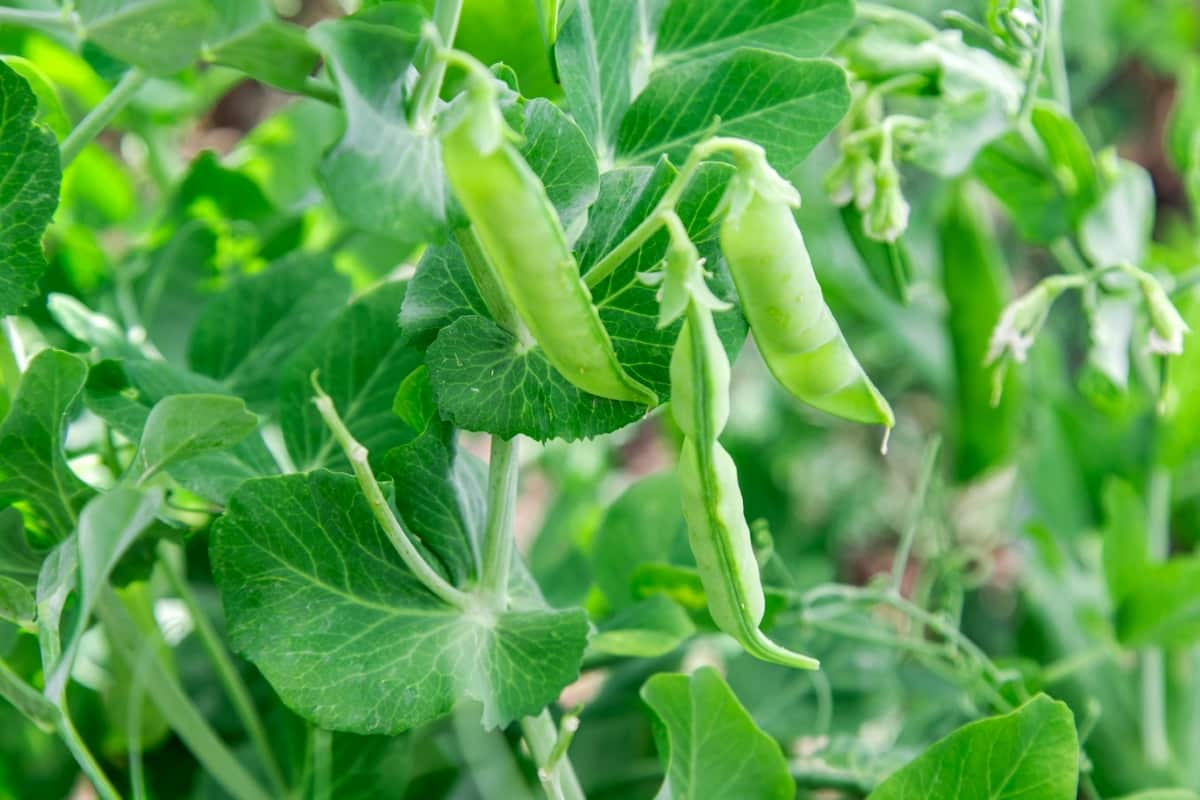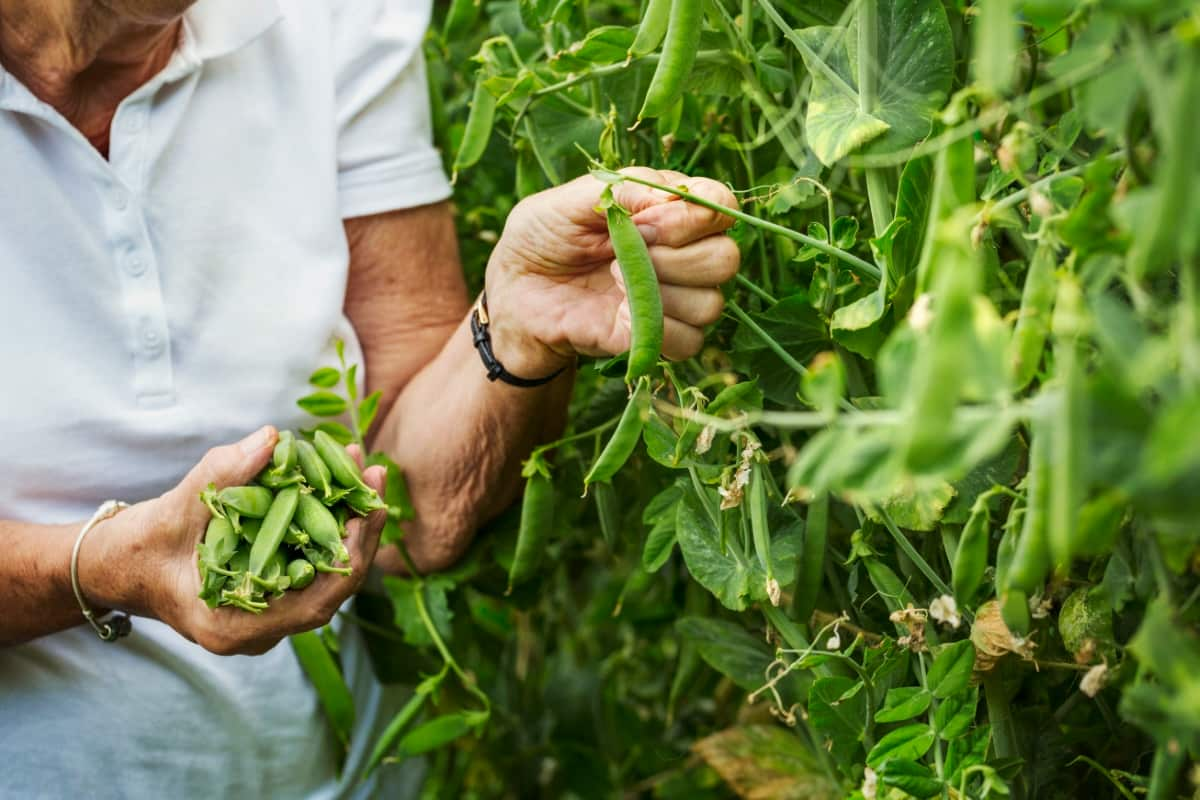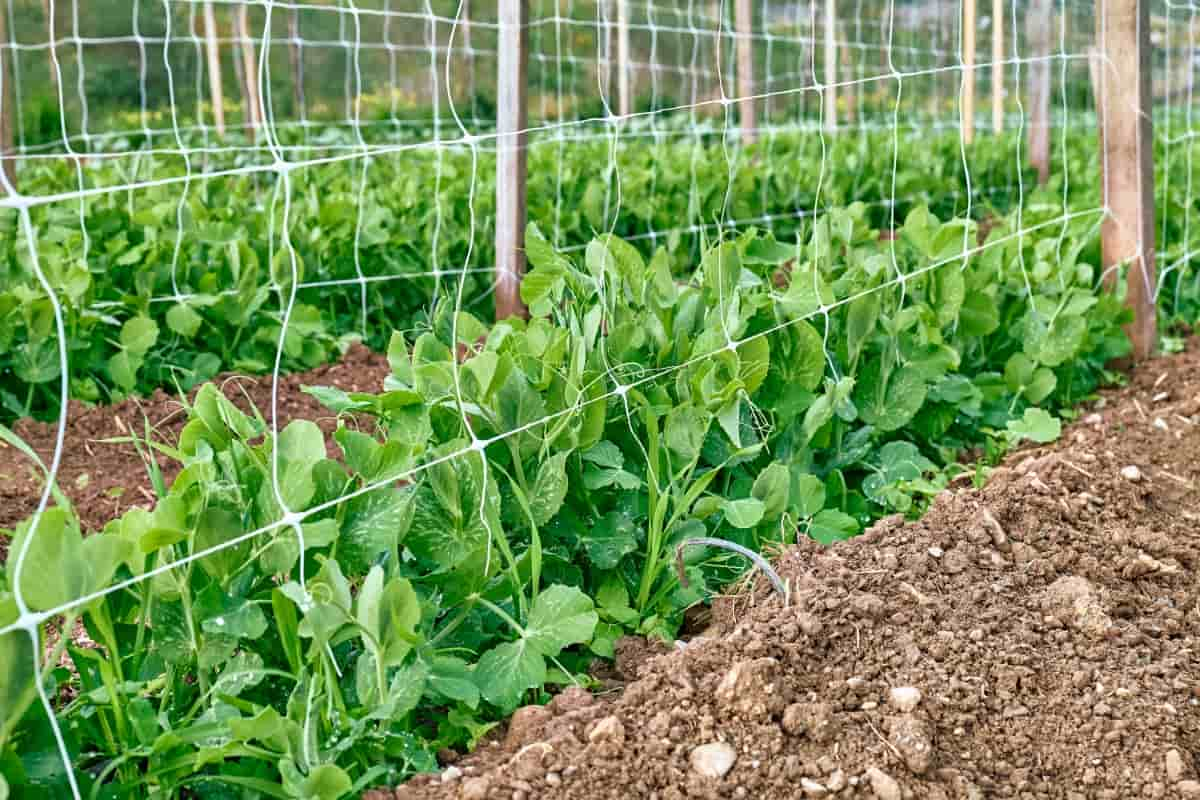Companion planting, a time-tested gardening tradition, is a strategy employed by farmers and gardeners alike to optimize their plants’ growth, health, and yield. One popular vegetable that significantly benefits from this practice is the pea. When selecting companion plants for peas, it is crucial to consider how they might support the peas’ growth, improve the garden ecosystem, and boost overall yield. This article aims to comprehensively understand peas companion plants, detailing their benefits, the best choices for various settings, and which plants to avoid near peas.

Benefits of Companion Plants for Peas in the Garden
When discussing the benefits of companion plants for peas in the garden, we refer to a multifaceted set of advantages. Companion plants can deter pests, improve pollination, enrich soil fertility, and even boost the peas’ overall productivity. Certain companion plants also draw beneficial insects that help keep the harmful ones at bay.
For instance, plants such as calendula and cosmos are known to attract predatory insects, forming a natural pest control system. On the other hand, companion herbs for peas in organic gardening, like mint and dill, repel destructive insects and thus protect the pea plants. Therefore, understanding and harnessing the pea’s companion plants’ benefits can transform your gardening experience, leading to healthier, more productive plants.
Best Companion Plants for Peas to Deter Pests
Companion plants are pivotal in deterring pests that might otherwise ravage your pea crops. Garlic and chives, for example, are considered some of the best companion plants for peas due to their potent aromatic qualities that deter common garden pests like aphids and beetles. With their distinctive scent, marigolds can also be excellent allies in warding off nematodes, while nasturtiums can keep away damaging beetles and aphids. By employing such companions in your garden, you essentially create an organic defense system that helps safeguard your peas against various pests.
Peas Companion Plants for Improved Pollination
For those wondering, “What grows well with peas?” the answer lies in pest control and improved pollination. Certain flowering plants, like sunflowers and bee balm, can attract bees and other pollinators, enhancing pollination in your pea plants. These companion plants, with their brightly colored, nectar-rich blooms, lure in a wide range of pollinators, ensuring better fruit sets and, ultimately, a more bountiful harvest. Hence, strategically placing these companions can significantly boost the pollination rate and yield of your pea crops.
Companion Plants for Peas in Containers
When growing peas in containers, you must be even more judicious about your companion plants. The spatial limitations of containers necessitate a careful selection of companions that won’t outgrow or outcompete the peas. Plants like lettuce, spinach, and radishes make excellent companions for peas in containers due to their compact growth habits and complementary growth cycles. These cool-season crops, like peas, flourish under the same conditions, and their shallow roots don’t compete with the peas for nutrients.
In case you missed it: 10 Common Problems With Green Peas Plants: Treatment and Solutions

Companion Herbs for Peas in Organic Gardening
The integration of herbs in your garden serves more than just culinary purposes. Certain herbs, such as dill, mint, and rosemary, function excellently as companion herbs for peas in organic gardening. They naturally deter various pests, foster biodiversity, and enhance the peas’ flavor profile. For instance, mint deters aphids and ants, while rosemary repels carrot flies and cabbage moths. Incorporating these herbs into your garden supports the peas and adds an aromatic charm to your garden landscape.
Flowering Companion Plants for Peas to Attract Beneficial Insects
In addition to improving pollination, flowering companion plants for peas also attract beneficial insects. These insects, such as ladybugs, lacewings, and parasitic wasps, prey upon harmful pests, keeping their populations in check. Flowering plants like cosmos, calendula, and zinnias are particularly effective at drawing these beneficial insects into your garden. Their vibrant flowers provide nectar and pollen that nourish these insects, encouraging them to stay and patrol your garden for destructive pests.
In case you missed it: CowPea/Black-Eyed-Peas Production Guide: A Step-By-Step Cultivation Practices

Companion Vegetables for Peas in Raised Beds
Peas thrive when grown in raised beds, and having the right companion vegetables can enhance their growth further. For those asking, “What should you not plant next to peas?” the answer includes vegetables like onions and garlic, which can inhibit the peas’ growth. Instead, choose companion vegetables like carrots, corn, and cucumbers. These plants have compatible growth needs, and their distinct root depths mean they don’t compete for nutrients, allowing each to thrive without hindering the other.
Companion Plants for Peas to Improve Soil Fertility
Companion plants can also significantly improve soil fertility, enhancing the conditions for pea growth. Green manures like clover and alfalfa, for instance, fix nitrogen in the soil, which leguminous peas can readily utilize. This symbiotic relationship ensures that peas receive ample nutrients, improving growth and yield. So, when considering what to plant next to peas, green manures can be an excellent choice, contributing to the peas’ productivity and overall soil health.
Companion Plants Chart for Peas in the Garden
Having a companion plants chart for peas in the garden can be extremely helpful in planning your planting layout. This chart would include the best companion plants for peas, which enhance growth, deter pests, and improve soil fertility, along with the plants that should be avoided. It is worth noting that companion planting is an art as much as a science. It requires observation, adaptation, and a touch of experimentation to unlock your garden’s full potential. Your pea plants can flourish with the right companions, providing you with a bountiful, healthy harvest.
Implementing a Peas Companion Planting Strategy
Implementing a peas companion planting strategy in your garden involves a few crucial steps. The first step is to understand your garden’s specific needs and characteristics. Soil type, climate, and sunlight exposure are some factors that need to be considered. Following this, plan your garden layout, considering each plant’s growth habit, size, and requirements. This ensures there is no competition for resources among the plants.
In case you missed it: Kale Companion Plants: What to Grow with Kale and What Not to Grow with Kale

Remember to plant the peas and their companions at a suitable distance to avoid overcrowding. Rotate crops in the following seasons to balance soil nutrients and prevent pest infestations. Maintain a record of what works and what doesn’t in your garden, as companion planting often involves a bit of trial and error. Lastly, be patient. Establishing a successful companion planting system takes time, but the benefits are worth the effort.
Conclusion
Companion planting provides a holistic approach to gardening, combining a blend of plants that can support and enhance each other’s growth. The benefits of peas companion plants in the garden range from pest control to improved pollination and soil fertility. Companion planting also offers a sustainable and Eco-friendly gardening solution, reducing the need for chemical pesticides and fertilizers.
Whether growing peas in containers, raised beds, or a large garden plot, companion planting can elevate your gardening experience, fostering healthier plants and a more abundant harvest. So, as you plan your next gardening venture, consider the benefits of companion planting for peas. After all, peas, like us, flourish best in good company.
- Feed Your Flock for Less: Top 10 Tips to Save on Chicken Feed
- Ultimate Guide to Ossabaw Island Hog: Breeding, Raising, Diet, and Care
- Hatching Answers: The Top 10 Reasons Your Chickens Aren’t Laying Eggs
- Eggs and Economics: Breaking Down the Cost of Raising Backyard Chickens
- Defend Your Greens: Proven Methods to Keep Iguanas Out of Your Garden
- Ultimate Guide to Cinnamon Queen Chicken: A Comprehensive Guide for Beginners
- Ultimate Guide to California Tan Chicken: Breeding, Raising, Diet, Egg-Production and Care
- Ultimate Guide to Marsh Daisy Chicken: Breeding, Raising, Diet, and Care
- 10 Types of Chicken Farming Businesses You Can Start for Profits